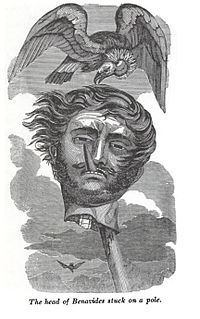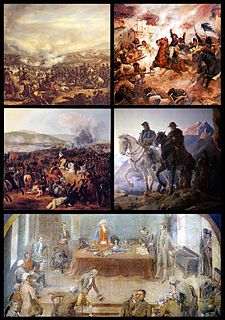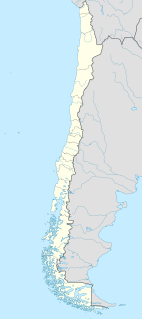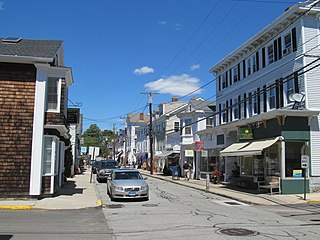Second voyage
Back in its Connecticut home port, the crew of the Hersilia quickly spread news of the recently South Shetland Islands. The Fanning family organised a small fleet with fellow Stonington merchants to exploit the large seal populations there. Sheffield remained as captain and returned to the islands late in 1820. The Hersilia departed for Chile in February 1821 with a hold of over 15,000 seal furs. It was anchored at Santa María Island by May.

Connecticut is the southernmost state in the New England region of the United States. As of the 2010 Census, it has the highest per-capita income, Human Development Index (0.962), and median household income in the United States. It is bordered by Rhode Island to the east, Massachusetts to the north, New York to the west, and Long Island Sound to the south. Its capital is Hartford and its most populous city is Bridgeport. It is part of New England, although portions of it are often grouped with New York and New Jersey as the Tri-state area. The state is named for the Connecticut River which approximately bisects the state. The word "Connecticut" is derived from various anglicized spellings of an Algonquian word for "long tidal river".

Chile, officially the Republic of Chile, is a South American country occupying a long, narrow strip of land between the Andes to the east and the Pacific Ocean to the west. It borders Peru to the north, Bolivia to the northeast, Argentina to the east, and the Drake Passage in the far south. Chilean territory includes the Pacific islands of Juan Fernández, Salas y Gómez, Desventuradas, and Easter Island in Oceania. Chile also claims about 1,250,000 square kilometres (480,000 sq mi) of Antarctica, although all claims are suspended under the Antarctic Treaty.

Santa María is a Chilean island, sparsely inhabited, that is located off the coast of Coronel. Santa María has been witness of important events of the history of Chile and the world.
The crew was captured In the evening of the 14th, men loyal to Vicente Benavides captured the crew. Benavides was a royalist guerrilla leader in the Chilean War of Independence and was based out of the nearby Arauco. After sailing the Hersilia to the mouth of the Carampangue River the majority of the sealers were taken to Arauco as prisoners. Benavidas distributed the captured sealers among his own men, "one to each officer, to wait on, and serve them at their quarters, or in their families, as a menial slave..." Sheffield and another American captain were utilised by Benavidas to write promissory notes to help finance his campaign.

Vicente Benavides Llanos was a Chilean soldier who fought in the Chilean War of Independence.

The Chilean War of Independence was a war between pro-independence Chilean criollos seeking political and economic independence from Spain and royalist criollos supporting continued allegiance to the Captaincy General of Chile and membership of the Spanish Empire.

Arauco is a city and commune in Chile, located in Arauco Province in the Bío Bío Region. The meaning of Arauco means Chalky Water in Mapudungun. The region was a Moluche aillarehue. The Spanish settlements founded here during the Conquest of Chile were destroyed on numerous occasions by the Mapuche during the Arauco War.
The Hersilia was refitted by Benavidas to serve as a warship. Its hold of seal pelts were taken to shore and several cannon were brought aboard. With a compliment of an approximately 100 men, the Hersilia sailed for the Chiloé Island settlement of Castro. While there additional funds and supplies for Benavides was ordered. Near Arauco the vessel became beached, with the Americans commanded to free the vessel. On the evening of September 26, the majority of them escaped under Sheffield on two whaling boats for Santa María Island. Storms and high gales kept them detained there for five days, with the men leaving for Valparaíso the following day. The Americans avoided landing on the coast until further north of the Bay of Concepción to avoid any pursuers. Starting at Maule they went overland and were given much need foodstuffs by Chileans throughout their journey.
Chiloé Island, also known as Greater Island of Chiloé, is the largest island of the Chiloé Archipelago off the coast of Chile, in the Pacific Ocean. The island is located in southern Chile, in the Los Lagos Region.

Castro is a city and commune on Chiloé Island in Chile. Castro is the capital of the Chiloé Province in the Los Lagos Region. The city is located on Estero de Castro on the eastern coast of central Chiloé Island. This position provides Castro with a good access to the eastern islands of Chiloé Archipelago as well as to the open ocean through Cucao and Huillinco to the west.

Valparaíso is a major city, seaport, and educational center in the commune of Valparaíso, Chile. "Greater Valparaíso" is the third largest metropolitan area in the country. Valparaíso is located about 120 kilometres (75 mi) northwest of Santiago by road and is one of the South Pacific's most important seaports. Valparaíso is the capital of Chile's second most populated administrative region and has been the headquarters for the Chilean National Congress since 1990. Valparaíso has seven universities.
When the Americans finally reached Valparaíso, Sheffield held a conversation with the British commodore in charge of the South America Station, Sir Thomas Hardy. Informed of their months of captivity and abuse by Benavides, Hardy agreed to aid the Americans. A ship would be sent to Arauco so as to retrieve the Hersilia and the remaining Americans still there. The British warship HMS Conway was selected for the mission, with Sheffield sailing on board. When they reached Arauco however, the British and Americans found the settlement ablaze. Soldiers loyal to the Republic of Chile had fought Benavides and forced him to retreat into the countryside. Prior to leaving his troops set fire to the Hersilia and various buildings in town, including the storehouses containing the seal pelts previously gathered by Sheffield's men. The remaining Americans that didn't previously escape the Royalist camp were found and rejoined their compatriots. Once back at Valparaíso, the Americans arranged for passage back to the United States. Notably the British officers gave funds to make this possible.
This page is based on this
Wikipedia article Text is available under the
CC BY-SA 4.0 license; additional terms may apply.
Images, videos and audio are available under their respective licenses.

Nathaniel Brown Palmer was an American seal hunter, explorer, sailing captain, and ship designer. He gave his name to Palmer Land, which he explored in 1820 on his Hero sloop. He was born in Stonington, Connecticut and was a descendant of Walter Palmer, one of the town's founders.

Elephant Island is an ice-covered mountainous island off the coast of Antarctica in the outer reaches of the South Shetland Islands, in the Southern Ocean. Its name was given by early explorers sighting elephant seals on its shores. The island is situated 245 kilometres north-northeast of the tip of the Antarctic Peninsula, 1,253 kilometres west-southwest of South Georgia, 935 kilometres south of the Falkland Islands, and 885 kilometres southeast of Cape Horn. It is within the Antarctic claims of Argentina, Chile and the UK. Brazil has a shelter on the island, Goeldi, supporting the work of up to six researchers each during the summer and had another (Wiltgen), which was dismantled in the summer of 1997/98.

Livingston Island is an Antarctic island, part of the South Shetlands Archipelago in the Southern Ocean. It was the first land discovered south of 60° south latitude in 1819, a historic event that marked the end of a centuries-long pursuit of the mythical Terra Australis Incognita and the beginning of the exploration and utilization of real Antarctica. The name Livingston, although of unknown derivation, has been well established in international usage since the early 1820s.

The Tonquin was a 290-ton American merchant ship initially operated by Fanning & Coles and later by the Pacific Fur Company (PFC), a subsidiary of the American Fur Company (AFC). Its first commander was Edmund Fanning, who sailed to the Qing Empire for valuable Chinese trade goods in 1807. The vessel was outfitted for another journey to China and then was sold to German-American entrepreneur John Jacob Astor. Included within his intricate plans to assume control over portions of the lucrative North American fur trade, the ship was intended to establish and supply trading outposts on the Pacific Northwest coast. Valuable animal furs purchased and trapped in the region would then be shipped to China, where consumer demand was high for particular pelts.

Rugged Island is an island 3 miles (4.8 km) long and 1 mile (1.6 km) wide, lying west of Livingston Island in the South Shetland Islands. Its surface area is 10.4 square kilometres (4.0 sq mi). The island's summit San Stefano Peak rises to 256 metres (840 ft) above sea level. Rugged Island is located at 62°38′S 61°15′W. Rugged Island was known to both American and British sealers as early as 1820, and the name has been well established in international usage for over 100 years.
Capt. Abram Kean was a controversial sealing captain and politician from Flowers Island, Newfoundland. He was famous for his success in sealing, with capturing over a million pelts, and infamous for his role in sending 78 men to their deaths in the 1914 Newfoundland Sealing Disaster.
Union was constructed at Barnstable, Massachusetts, later purchased by Edmund Fanning, who refitted and registered the vessel in New York under ownership of Fanning & Coles shipping company partnership.

Cape Sheffield is a cape forming the northwest extremity of Rugged Island in the South Shetland Islands, Antarctica. It was named for Captain James P. Sheffield, Master of the brig Hersilia of Stonington, Connecticut, in 1819–20 and 1820–21, the first American sealer known to have visited the South Shetland Islands. In 1819–20 he took 8,868 sealskins from headquarters at Rugged Island.

Indian Rocks is a group of rocks in eastern Hero Bay on the north side of Livingston Island in the South Shetland Islands, Antarctica. The area was visited by early 19th century sealers operating from Blythe Bay.
Canada's 2008 annual commercial seal hunt in the Gulf of St. Lawrence and around Newfoundland, Quebec and Nova Scotia began on March 28. The hunting season lasts from mid-November to mid-May, but the hunt mainly occurs in March and April. Canada's seal hunt is the world's largest hunt for marine mammals.

Essex Point is a point at the northwest end of Byers Peninsula, Livingston Island in the South Shetland Islands, Antarctica. It forms the west side of the entrance to Barclay Bay and the northeast side of the entrance to Svishtov Cove, and is surmounted by Drong Hill.

Benson Point is the ice-free headland forming the southwest extremity of Rugged Island in the South Shetland Islands, Antarctica. It is a northwest entrance point for Morton Strait. The area was known to early 19th century sealers.

Vietor Rock is a rock linked by a spit to Nikopol Point on the south coast of Byers Peninsula, Livingston Island in the South Shetland Islands, Antarctica. The area was visited by early 19th century sealers operating on Byers Peninsula.

Hersilia Cove is the 650 m wide cove indenting for 800 m the north coast of Rugged Island in the South Shetland Islands, Antarctica west of Herring Point.

Araucano was a 16- or 18-gun brigantine of the First Chilean Navy Squadron.
HMS Conway was launched in 1814 as the lead ship of her class. The Navy sold her in 1825 and she became the merchantman Toward Castle, and then a whaler. She was lost in 1838 off Baja California while well into her third whaling voyage.





















